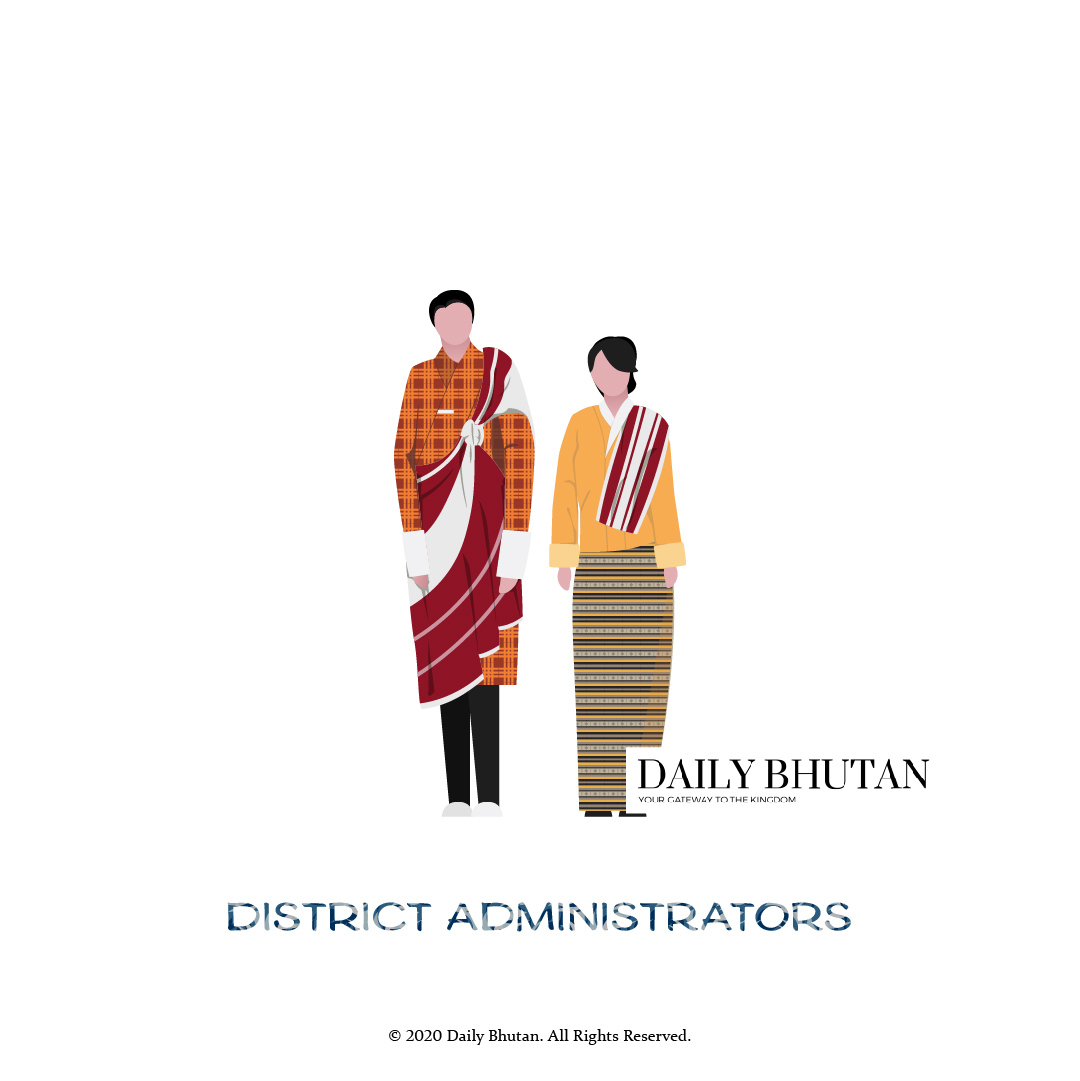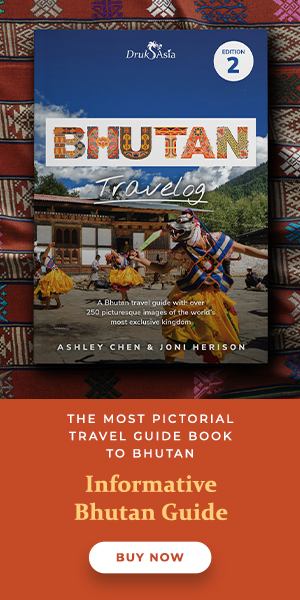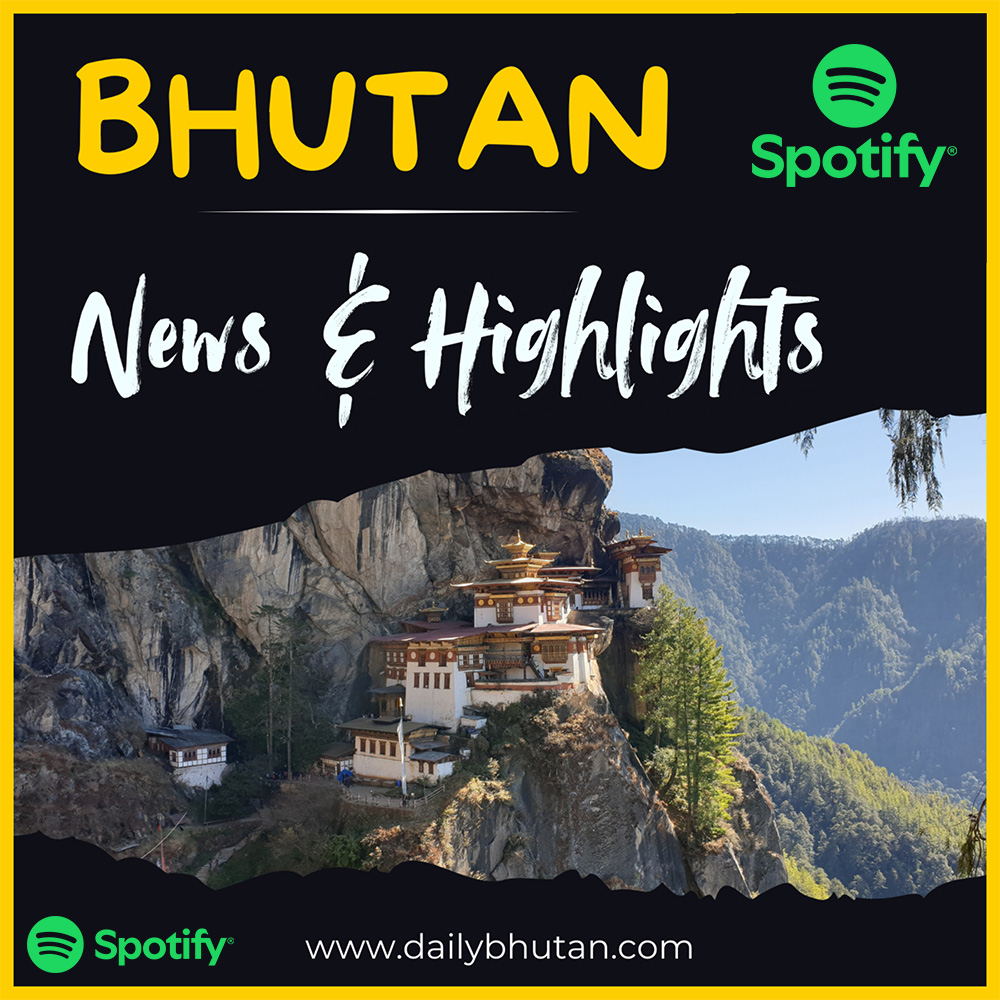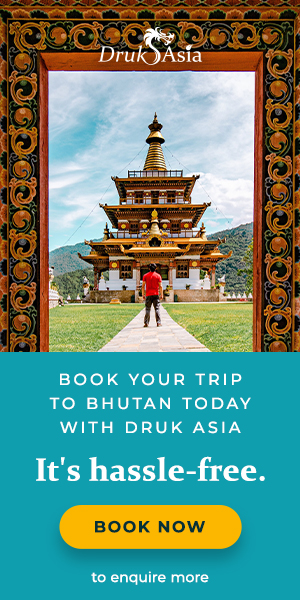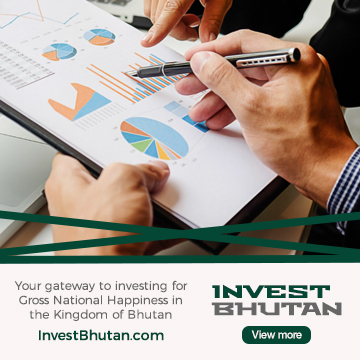What are the different local governments in Bhutan?
Bhutan’s development planning is guided by the development philosophy of Gross National Happiness (GNH), which encompasses four pillars that includes the promotion of good governance.
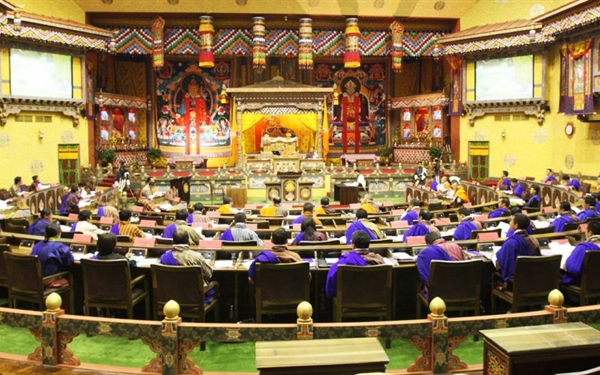
An integral aspect of advancing good governance in Bhutan has been the gradual process of democratic governance and decentralization, the beginnings of which dates back to the establishment of the Tshogdu or National Assembly in 1953, followed by the Lodey Tshogde (Royal Advisory Council) in 1965, the High Court in 1967 and the Lhengye Zhungtshog (Cabinet) in 1972. During the 5th Five Year Plan, this process of decentralization was enhanced to encompass local governance with the formation of Dzongkhag Yargye Tshogdus (DYT) or District Development Committees in 1981, which resulted in the delegation of administrative and financial powers to the district level (GNHC, 2019).
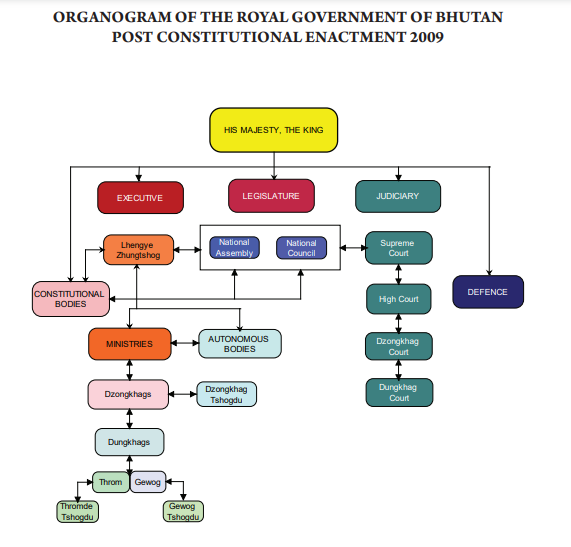
Organogram of the Royal Government of Bhutan Post Constitutional Enactment 2009. Statistics Yearbook of Bhutan 2020 by National Statistics Bureau
The Local Government Act of 2009 establishes local governments in each of the 20 Dzongkhags overseen by the Ministry of Home and Cultural Affairs. The Act tasks all local governments with a variety of objectives, including promoting Gross National Happiness; providing democratic and accountable government; preserving culture and tradition; promoting development; protecting public health; and discharging any other duties specifically created by other law.
Local governments are generally headed by a chairperson and a deputy chairperson who lead, represent, and manage their respective bureaucracies, each answering to the body above it and to parliament of Bhutan. All local governments are administrative divisions and are prohibited to make laws, however they are empowered to make rules and regulations consistent with law as established by parliament. Members of all local governments must be between ages 25 and 65, and sit for five-year terms, or until the local government is dissolved.
Below is a summary of the local governance system in the Kingdom of Bhutan.
Dzongkhag (Districts)
There are a total of 20 dzongkhags (districts) in Bhutan:
- Bumthang
- Chukha
- Dagana
- Gasa
- Haa
- Lhuntse
- Mongar
- Paro
- Pemagatshel
- Punakha
- Samdrup Jongkhar
- Samtse
- Sarpang
- Thimphu
- Trashigang
- Trashiyangtse
- Trongsa
- Tsirang
- Wangdue Phodrang
- Zhemgang
- Each dzongkhag has its own elected government with non-legislative executive powers, called a dzongkhag tshogdu (district council). It is the highest decision making body in the dzongkhag.
- The dzongkhag tshogdu is assisted by the dzongkhag administration headed by a dzongdag (royal appointees who are the chief executive officer of each dzongkhag)
- Each dzongkhag also has a dzongkhag court chaired by a dzongkhag drangpon (judge), who is appointed by the Chief Justice of Bhutan on the advice of Royal Judicial Service Council.
- The dzongkhags, and their residents, are represented in the Parliament of Bhutan, a bicameral legislature consisting of the National Council and the National Assembly.
- Each dzongkhag has one National Council representative.
- Thimphu is the most populous dzongkhag and Gasa is the least populous.
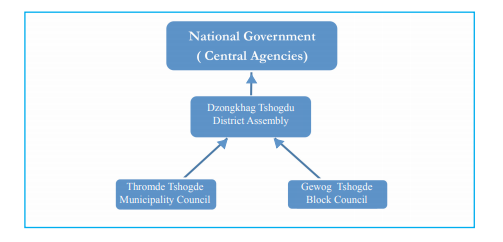
Bhutanese Local Governance System by Ministry of Home and Cultural Affairs.
Dungkhag (Sub-district)
- There are 15 dungkhags in Bhutan.
- The head of a dungkhag is a Dungpa or Drungpa.
- Dungpas are administrative executives that report directly to the district administration.
- Dungkhag administrations guide and support their constituent gewog administration and implement the decisions of the Dzongkhag Tshogdu (District Council).
- Dungkhags provide general administration and coordination for two or more gewogs (group of villages).
- Only the following dzongkhags have dungkhags (sub-districts):
- Chhukha (Phuentsholing)
- Dagana (Lhamoy Zingkha)
- Haa (Sombaykha)
- Mongar (Weringla)
- Pemagatshel (Nganglam)
- Samdrup Jongkhar (Samdrupchholing and Jomotsangkha)
- Samtse (Tashichholing and Dorokha)
- Sarpang (Umling)
- Thimphu (Lingzhi)
- Trashigang (Sakteng, Thrimshing and Wamrong)
- Zhemgang (Panbang)
- Under the Local Government Act of 2009, the administrative status of dungkhags is eschewed, and Dungpas are not specified to attend meetings of the Dzongkhag Tshogdu.
- The repeal of the Local Government Act of 2007 means that although dungkhags are no longer legal administrative divisions, they remain judicial and law enforcement jurisdictions under the Constitution.
Gewog or Geog (Block)
- There are 205 gewogs in Bhutan.
- Gewogs are the lowest administrative structure of the government system.
- Some gewogs are directly subordinate to dungkhags while others are directly subordinate to dzongkhags.
- Gewog Tshogde is the highest decision-making body at the gewog level.
- Gewog Tshogde is made up of Gup (Head of Gewog), Mangmi (Deputy of Gewog) and five to eight democratically elected Tshogpas (Village representatives) from among villages.
- The Gups are also assisted by Gewog Administrative Officer and Gaydrungs (Gup’s Clerk).
- The gewogs are divided into chewogs (basic electoral precinct) for elections and thromdes (municipalities) for administration.
Chiwog or chios (Basic electoral precincts)
- There are 1044 basic electoral precincts of Bhutan.
- The head of a chiwog is called a Tshogpa.
- Generally, there are 5 or 6 chiwogs that form a gewog.
- Most of the chiwogs are small rural communities. More densely populated areas tend to be separate thromdes, or municipalities.
- Under the 2008 Constitution, chiwogs are mentioned only as electorates, defined as “under a gewog”.
- Under the Election Act of 2008, chiwogs are basic electoral constituencies within gewogs to elect one member of the Gewog Tshogde (county committee) and Dzongkhag Thromde (district council).
Thromde (Municipality)
- Thromdes are administered independently by a Thromde Tshogde if sufficiently developed and populated (Class A Thromdes); or directly by Dzongkhag Administration or the Gewog Administration as decided by the Government (Class B Thromdes and Yenlag Thromdes).
- Thromde Tshogde is the highest decision-making body at the municipality level.
- Each Thromde Tshogde is composed of seven to ten elected members and headed by a Thrompon.
- As of 2017 there are only four self-governing Thromde (Dzongkhag Thromde class A) : Thimphu, Phuentsholing, Gelephu and Samdrup Jongkhar.
Summary of terms
Dzongkhag - District
Dzongkhag tshogdu (district council)
Dzongdag (Head of each dzongkhag that assist the Tshogdu)
Dzongrab (Deputy district administrator)
Dungkhag - Sub-district
Dungpa or Drungpa (Head of sub-district)
Gewog - Block
Gups (Head of the block) - elected member
Mangmi (Deputy Head) - elected member
Tshogpas (Representatives of the block) - elected members
Gewog tshogde (highest decision-making body in the gewog)
Gaydrung (Gup’s clerk)
Chewog - Villages
Tshogpa (Head of Chiwog) - elected member
Thromde - Municipality
Thromde Tshogde (highest decision-making body in the Thromde)
Thrompon (Head of Thromde)
Click here to find out what are the different colour ceremonial scarves worn by the different representatives.
